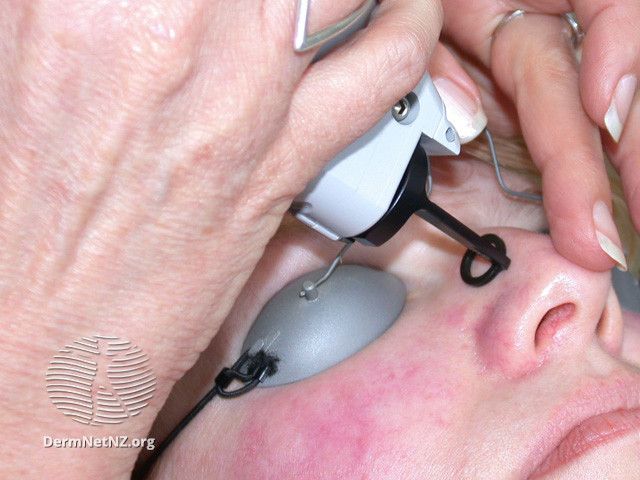- Acne
- Actinic Keratosis
- Aesthetics
- Alopecia
- Atopic Dermatitis
- Buy-and-Bill
- COVID-19
- Case-Based Roundtable
- Chronic Hand Eczema
- Drug Watch
- Eczema
- General Dermatology
- Hidradenitis Suppurativa
- Melasma
- NP and PA
- Pediatric Dermatology
- Pigmentary Disorders
- Practice Management
- Precision Medicine and Biologics
- Prurigo Nodularis
- Psoriasis
- Psoriatic Arthritis
- Rare Disease
- Rosacea
- Skin Cancer
- Vitiligo
- Wound Care
News
Article
ASDS: Review of Lasers and Light-Based Therapies for Acne
Author(s):
New technologies such as the 1726-nm laser and pneumatic assisted broad band light are emerging treatments in acne.
Authors of an oral abstract1 presented at the 2023 American Society for Dermatologic Surgery Annual Meeting in Chicago, Illinois, completed a literature review of laser and light-based devices for the treatment of acne. Morgan Murphrey, MD, a board-certified dermatologist at Massachusetts General Hospital, presented the results of the study, conducted alongside Ryan Kelm, MD, and Mat Avram, MD, JD.
In their literature review, Murphrey et al considered blue and red light, intense pulsed light, and photodynamic therapies for light-based treatments. For laser therapies, the authors considered CO2, Nd: YAG, KTP, diode, PDL, Er: glass, and the novel 1726nm wavelength.
Light-Based Therapies
Blue (415-545nm) and red (600-650nm) light are commonly used in acne treatment, according to Murphrey et al, because they cause porphyrin activation in C. acnes, which causes reactive oxygen species and results in bacterial death. Blue and red light therapy both have anti-inflammatory properties, however, blue tends to have more. “They're popular because of at-home devices, including blue and red light emitting diode or LED devices, which have actually undergone recent systematic trials, randomized control trials, showing that these devices can be effective in clearing lesions more quickly, and also creating anti-inflammatory effects,” said Murphrey.
Intense pulsed light is similarly anti-inflammatory and causes damage to blood vessels supplying nutrients to the sebaceous glands. Murphrey noted that a recent study showed that intense pulsed light is effective as monotherapy in up to 85% of patients but is more commonly used in combination with topical treatments.
The 2 most common photosensitizers in photodynamic therapy (PDT) are 5-aminolevulinic acid and methyl aminolevulinate. The most common light sources include red light, intense pulsed light, and blue light. However, Murphrey mentioned that common adverse effects of photodynamic therapy include redness, inflammation, photosensitivity, blistering, and pain. According to Murphrey, “The primary pitfall of PDT is that a safe and pain free treatment protocol with consistent results has not been well established.”
Laser Therapies
- PDL (585 & 595 nm)
- A recent systemic review indicated that pulsed dye lasers with long pulse durations in more than 4 sessions can significantly decrease a patient’s acne severity score.2
- Nd: YAG (1064 nm)
- The Nd: YAG has a long history of use for acne scarring, but recent small studies have shown it may also be safe and effective for active acne.3
- Diode (1450 nm)
- Additional small studies have found improvement in acne and decreased sebum production, but it is no longer commercially available.4
- Er: glass (1540 nm and 1550 nm)
- The 1540 nm and 1550 Er: glass lasers have recently been proven safe and effective in small clinical trials, with minimal adverse effects and long-term clearance.5
- CO2 (10,600 nm)
- The fractional CO2 laser is best for acne scar resurfacing.1
- KTP (532 nm, 585 nm, 595 nm)
- KTP pulse dye lasers are ideal for acne erythema.1
Novel 1726 nm Laser
Murphrey also presented data and timeline points on the novel 1726 nm laser.
- In 2012, Paithankar et al described “selectivephotothermolysis of human sebaceous glands.”1,6
- March 2022: The FDA clears the AviClear device, which works by contact cooling and treats to fluence. In a study of 17 patients, 97% achieved reduction in inflammatory lesions at 24 months.7
- November 2022: The FDA clears the Accure device, which uses air cooling and treats to temperature rather than power or tolerance. Munavalli’s study saw an 80% average lesion reduction at 1-year post-treatment.8
- July 2022: The FDA clears the TheraClear X device, which allows for pneumatic pulsed broadband light and demonstrated at least 50% improvement in lesion cunts post-first treatment.1
“Dermatologists and other physicians have sought to expand the treatment armamentarium to include light and energy-based devices. In the past, many of these treatments have been limited by patient sensitivity or discomfort, or lack of efficacy. New technologies, including the 1726 nm laser and pneumatic assisted broadband light, are emerging, showing promise and paving the way to a new treatment paradigm in acne,” concluded Murphrey.
References
- Murphrey M, Kelm R, Avram M. Energy and light based devices for acne: a review and update on new technology. Presented at: 2023 American Society for Dermatologic Surgery Annual Meeting; November 2-5, 2023; Chicago, IL.
- Yang TH, Li CN, Huang YC. The Efficacy of Pulsed Dye Laser Treatment for Acne Vulgaris: A Systemic Review and Meta-Analysis. Dermatol Surg. 2022;48(2):209-213. doi:10.1097/DSS.0000000000003345
- Kesty K, Goldberg DJ. 650 usec 1064nm Nd:YAG laser treatment of acne: A double-blind randomized control study. J Cosmet Dermatol. 2020;19(9):2295-2300. doi:10.1111/jocd.13480
- Jih MH, Friedman PM, Goldberg LH, Robles M, Glaich AS, Kimyai-Asadi A. The 1450-nm diode laser for facial inflammatory acne vulgaris: dose-response and 12-month follow-up study. J Am Acad Dermatol. 2006;55(1):80-87. doi:10.1016/j.jaad.2006.02.018
- Politi Y, Levi A, Lapidoth M. Integrated Cooling-Vacuum-Assisted Non-Fractional 1540 nm Erbium:Glass Laser is Effective in Treating Acne Scars. J Drugs Dermatol. 2016;15(11):1359-1363.
- Paithankar DY, Sakamoto FH, Farinelli WA, et al. Acne Treatment Based on Selective Photothermolysis of Sebaceous Follicles with Topically Delivered Light-Absorbing Gold Microparticles. J Invest Dermatol. 2015;135(7):1727-1734. doi:10.1038/jid.2015.89
- Paithankar DY, Sakamoto FH, Farinelli WA, et al. Acne Treatment Based on Selective Photothermolysis of Sebaceous Follicles with Topically Delivered Light-Absorbing Gold Microparticles. J Invest Dermatol. 2015;135(7):1727-1734. doi:10.1038/jid.2015.89
- Munavalli G. Photopneumatic Technology for the Treatment of Mild-to-moderate Acne Vulgaris-A Review. J Clin Aesthet Dermatol. 2023;16(6 Suppl 2):S4-S6.
Newsletter
Like what you’re reading? Subscribe to Dermatology Times for weekly updates on therapies, innovations, and real-world practice tips.















